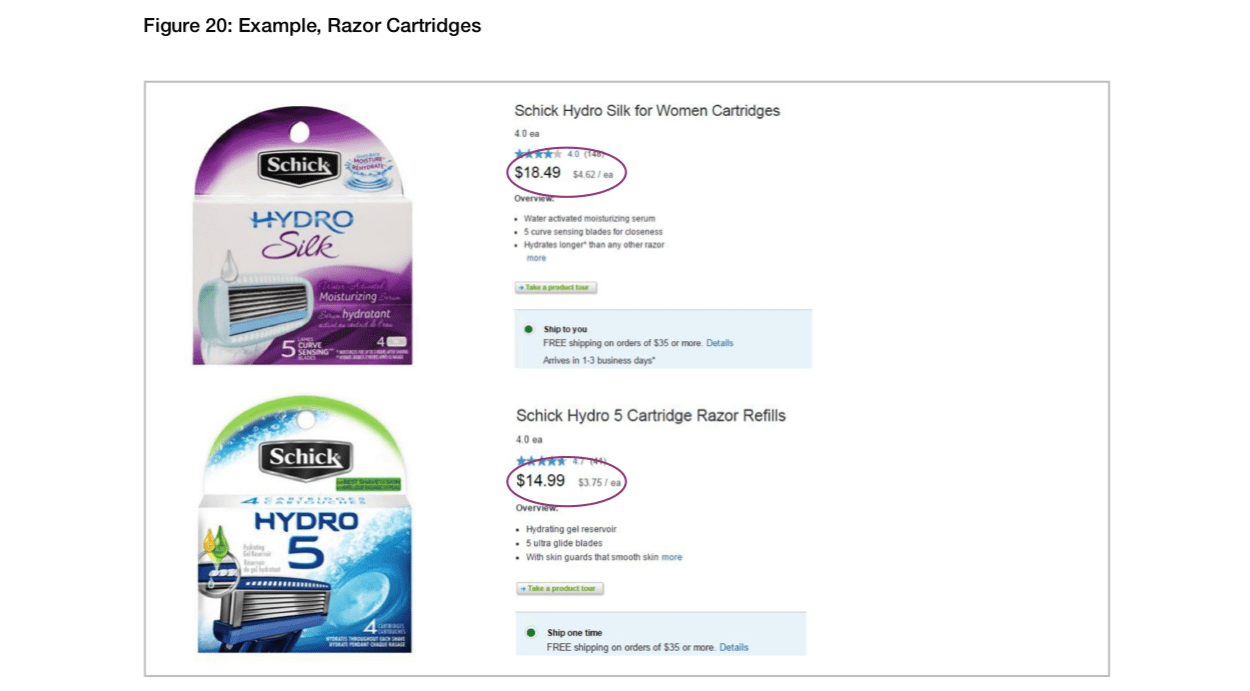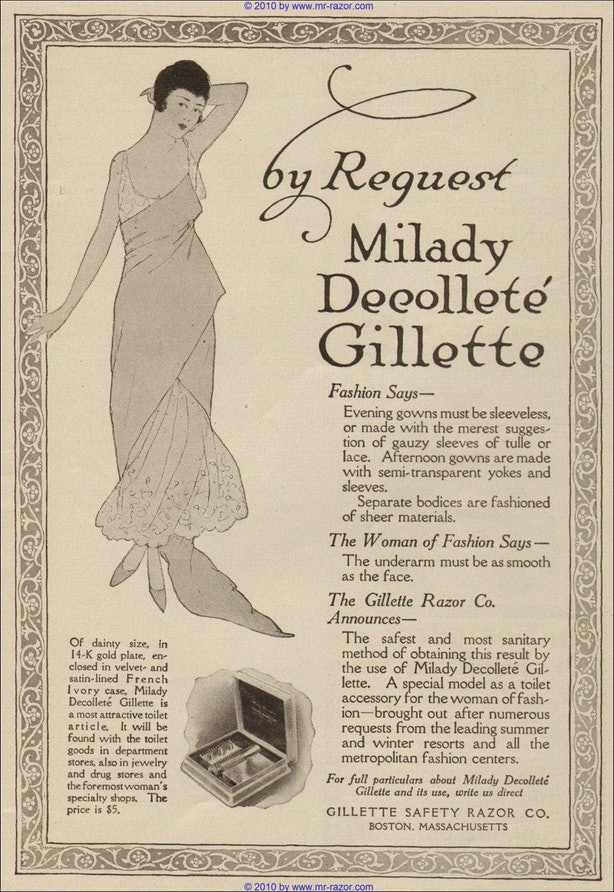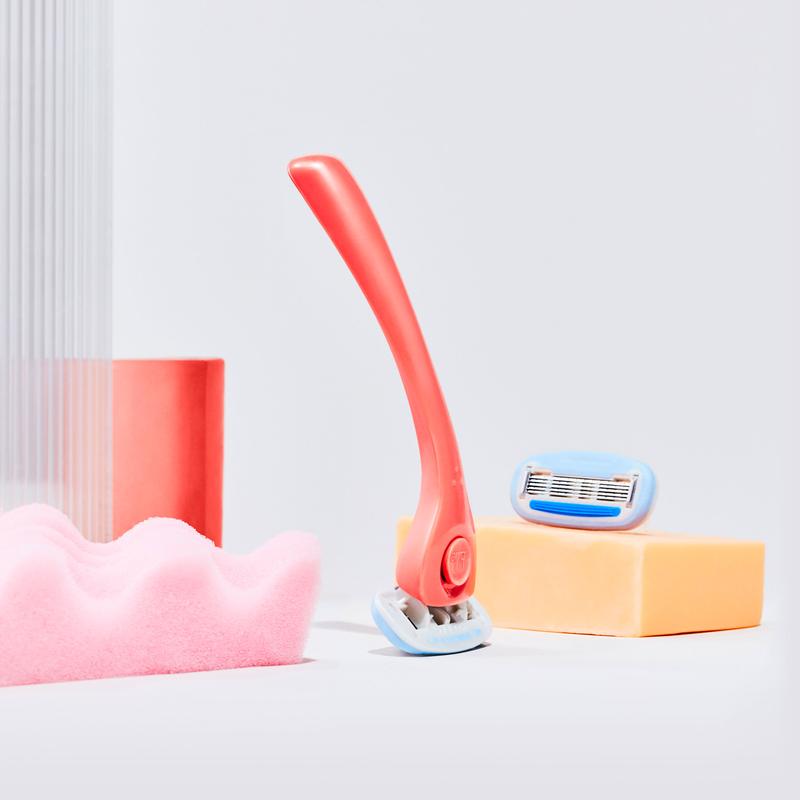It is more expensive to be a female consumer in the U.S.
A study by the New York City Department of Consumer Affairs found that on average, personal care products for women cost 13 percent more than men. This infuriating price difference is called the pink tax, so named on the color of products marketed to women. In razors, for example, the report finds a $3 difference between Schick’s blade cartridges for men and for women. While individually, the report concludes, the price differences may seem small, the cumulative cost is not.

Screenshot from the NYC Department of Consumer Affairs report
Therefore, when a New-York based startup Billie declared that women have been overpaying for pink, or any, razors, for that matter, it got several women to pay attention. In a smooth marketing trick, Billie also started offering rebate while attracting more consumers: If you get 5, 10 or 15 women to sign up with Billie (not buy, merely sign up), you get a $5, $10, or $15 discount respectively.
Started by former advertising professional Georgina Gooley and Jason Bravman in November 2017, Billie sells its starter kit – a razor handle, blade cartridges and a magnetic razor holder for $9. It then makes money through a long-term subscription model, like the beauty brand Glossier, where women can order the blade cartridges according to their convenience. Billie has also expanded its business to sell shaving cream, body wash and lotion between $8 and $12.
In April 2017, the startup raised a seed fund of $6 million by investors such as Silverton Partners, along with Female Founders Fund and Lakehouse Ventures. It had raised $2 million in an earlier round by the latter two investors. It has also claimed that its products have been sold out thrice since launching.
The Shaving History
In the late 1800s, women’s underarms or legs were hidden away in chin-to-toe dresses. But in the coming years, long, puffy sleeves would make way for sleeveless evening gowns and bring blades dangerously close to the armpit.

“The underarm must be as smooth as the face” An advertisement for the Milady Décolleté razor (Photo Courtesy: Bustle)
In 1915, Harper’s Bazaar carried an advertisement for a depilatory powder where the model bared her shaved, smooth underarms. The ad must have caused a few ripples, as soon after in 1916, King C Gillette – known for his innovation of the Gillette safety razor that used inexpensive and disposable blades – launched a razor for women. Gillette’s Milady Décolleté razor advertised the tool as a fashion essential and manipulated women into getting rid of hair – ‘an embarrassing personal problem’.
It’s a trend that has continued to this day as shaving dominates a woman’s morning routine. But somewhere down the line, as women were asked to use depilatory creams lest they grow a stubble on their body, and since waxing took over, razors have stubbornly remained a boy’s toy.
Men’s grooming companies have been using the razor and blade model, where you sell the razor at a throwaway price and make money on blades, for a hundred years. In recent times, companies like Gillette or Schick were riding the golden goose till Dollar Shave Club brought better prices and further popularised the cartridge subscription model. Billie often compares itself to these boy clubs and makes a case for better prices for women. But even for women, Billie has not pioneered the razor and blade subscription model for women shaving. Angel Shave Club is often considered the first such club for women. And like some men’s razor clubs, it currently also offers free trial and similar blade costs as Billie.
But it’s Billie’s razors that have brought in innovation.

The Billie Razor (PC: Billie)
Billie recognises that men and women shave differently. For starters, women shave larger areas than men. So even though razors have been traditionally designed for men with minor colour and size alterations for women, Billie is armed with its findings on what makes the shaving experience different for both. For example, the startup has done its research on, say, how much time women need for a shave, to how much pressure they apply, or how the razor glides along their body.
Therefore, a Billie razor uses five blade cartridges with enough space between them to not cause clogging. Thoughtfully, the blades have rounded edges to reach difficult areas and are also encased in aloe soap so there is no need for a shaving cream. The startup has also paid attention to ergonomically design the handle for enhanced grip. It’s the grip, the razor’s magnetic handle, and aloe soap that Billie’s customers love the most. However, reviews of irritation after usage on sensitive skin also surface from time-to-time.
There’s an interesting story behind the name Bille. One of the brand’s FAQs says, A hundred years ago Billie was a man’s name – now it’s predominantly a woman’s name. A name morphing from a boy to girl is Billie’s metaphor for what they want to achieve in the male-dominated shaving industry. The New York-based startup also claims to donate 1% of its revenue to women’s causes around the world.
It’s 2018. The idea that women shouldn’t appear in public with body hair should have been old-fangled and orthodox. But Billie seems to be a new entrant in a market brimming with brands insisting and compelling women to conform to a certain beauty standard. Gooley, however, claims that Billie is different. She says that the brand is built on a philosophy where the goal is not to tell women to shave or not to shave, but that if “you choose to shave, you shouldn’t be overcharged for it.”
Subscribe to our newsletter



